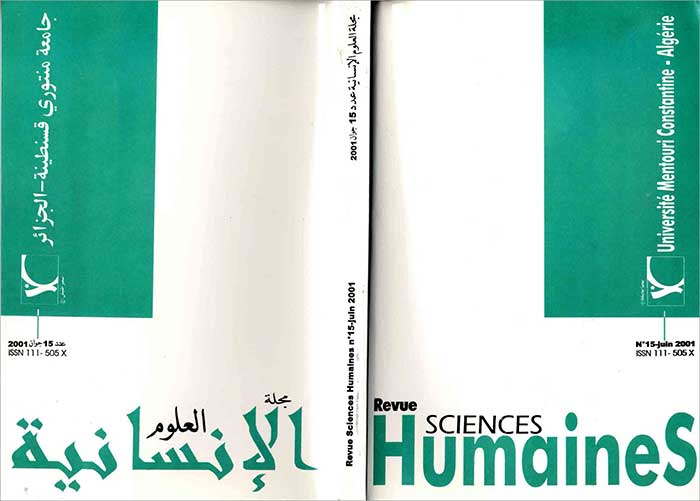Subjectless Complement Sentences In Universal Grammar
Résumé
Our purpose in the present article is to provide an adequate description of one feature type of sentential complements: subjectless complement clauses, by looking at the grammar of a range of languages. Obviously, languages do differ as for the internal and external structures of their complement sentences. Our aim in this description is to analyse subjectless complements cross-linguistically in order to find out some common features among the languages under study or some features specific to a certain number of languages. The procedure we will be following is that starting from the structure or type of variation we are looking for, we’ll end up with the language or the illustration in order to see how each language is different or similar to other languages and if it is so, we’ll try to find out what different or similar features it has.Téléchargements
Références
Applegate, J.R. (1963). The Structure of Kabyle, U.S. Office of Education.
Batstone, R. (1994). Grammar, Oxford University Press.
Cheng L, L.S. and R. Sybesma (1999). Bare and not so bare nouns and structure of NP: linguistic inquiry 30: 509-542.
Chomsky, N. (1981). Lectures on Government and Binding Dordrecht: Foris.
Comri, B. (1981). language Universals and Linguistic Typology. Basil Blackwell, Oxford.
Cook, V.J. (1988). Chomsky’s Universal Grammar: An Introduction. Oxford – Blackwell.
Davies, W.D. (1996). Morphological Uniformity and the null Subject Parameter in Adult SLA. “Studies in Second Language Acquisition 18, 475-493.
Graig, C.G. (1977). The Structure of Jacaltec, University of Texas Press, Austin and London.
Givon, T. (1980). The Binding Hierarchy and the Typology of Complements’ in Studies in Language. Vol. 4, 333-377.
Hilles, S. (1991). Access to Universal Grammar in Second language Acquisition, in L. Eubank, Point Counterpart: Universal Grammar in the Second language. Amsterdam, Benjamins 305-38.
Jones, M.A. (1996). Foundations of French Syntax. Cambridge University Press.
Jones, M. and Thomas, A.R. (1977). The Welsh Language. University of Wales Press, Cardiff.
Kayne, R.S. (1998). Overt Vs Covert Movement Syntax 1: 128-191.
Kayne, R.S. (1975). French Syntax. Mit Press, Cambridge, Massachusetts.
Kezeszowski, T.P. (1990). Contrasting Languages. The scope of Contrastive Linguistics. Berlin: Mouton de Gruyth.
Kilby, D. (1982). Finite and Non-Finite Sentence Complements. Unpublished paper, University of Essex.
Li, C.N. (1976). Subject and Topic. Academic Press, New York, San Francisco, London.
McCarthy, M. and O’Dell, F. (1994). English Vocabulary in Use. Cambridge University Press.
Paolillo, J.C. (1999). A symmetries in Universal Grammar: “The Role of method and Statistics”. Studies in Second language Acquisition to Appear.
Quicoli, A.C. (1982). The Structure of Complementation. E. Story – Scientia, P.VB.A., Scientific Publishers, Ghent, Antwerp, Brussels.
Quirk, R and Greenbaum, S. (1973). A University Grammar of English. Longman, London.
Radford, Andrew (1997). Syntactic Theory and the Structure of English: A Minimalist Approach, Cambridge. C.U.P.
Shachter, P. and Otanes, Y. (1972). Tagalog Reference Grammar. University of California Press, Berkeley, Los Angeles, London.
Thrainsson, H. (1979). On Complementation in Icelandic. Doctoral Dissertation, Harvard University, Cambridge, Massachusetts.
Tomlin, R.S. (1986). Basic Word Order : Functional principles, Londo : Groom Helm.
Williams Stephen, J. (1980). A Welsh Grammar. University of Wales Press, Cardiff.












